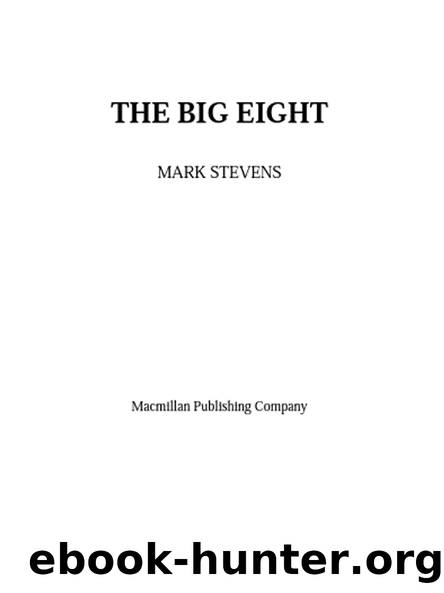The Big Eight by Mark Stevens

Author:Mark Stevens
Language: eng
Format: epub
Publisher: Macmillan Publishing Company
Published: 1981-07-15T00:00:00+00:00
Although these objectives are not solely the responsibility of the OCC, but are shared with other federal agencies, the Office of the Comptroller of the Currency is without question primary supervisor of the national banks. This role dates back to the National Bank Act of 1864, which created the OCC as the sole commercial-bank-chartering agency for the federal government and the principal regulator of the banks it charters.
For nearly three quarters of a century, the objectives of the OCC remained fairly well balanced between the need to maintain a free and competitive banking system and to insure the soundness of that system. But the shock of the depression—with banks failing by the thousands—abruptly changed things, bringing on a much tougher regulatory stance.
“Bank entry became subject to much greater discretion by regulatory agencies then ever before, although bank entry remained freer in the United States than in most other countries of the world. Competition was also dampened by controls on deposit interest rates, by curtailment of the range of activities in which banks could engage, and by the introduction of federal deposit insurance, which created a new federal agency whose major objective was bank soundness. The general regulatory atmosphere also became heavily charged with attitudes of caution and conservatism.” *
Questions about this policy of toughness were voiced with increasing frequency in the late 1950s. With the depression psychology replaced by the glowing optimism of the postwar era, business, academic, and political leaders called for a shift away from tight controls and toward more competition. The OCC moved in this direction by encouraging applications for new charters and widening the scope of activities in which national banks could participate. In 1970, the President’s Commission on Financial Structure and Regulation reflected the temper of the times by recommending the elimination of many commercial banking restrictions. The commission found them to be anticompetitive or anti-innovative.
But the new liberalism itself was called into question in the early 1970s. Once again, bank soundness emerged as an important concern for regulators.
“The general financial environment has become increasingly risky to financial institutions,” DH&S found in a study conducted during this period, “as market interest rates and rate relationships have become increasingly volatile, while borrower credits in some sectors (especially real estate) have deteriorated. In this environment, large banks practicing liability management, with historically low capital ratios, have shown themselves to be vulnerable. At the same time the increasing competitiveness of financial markets and the potential widening of geographical market areas associated with the new branching technology have caused concern about the future viability of small banks, which have historically operated in more or less protected markets.”
In short, a new decade brought with it a new economic climate, a new set of problems (some related to emerging technology), and a new attitude toward bank regulations. The OCC recognized, quite correctly (and with a surprising amount of clarity for a federal agency), that changes were likely to come fast and furious within the foreseeable future, and that to be effective it would have to change its procedures to meet evolving conditions.
Download
This site does not store any files on its server. We only index and link to content provided by other sites. Please contact the content providers to delete copyright contents if any and email us, we'll remove relevant links or contents immediately.
POP by Steven Heller(2883)
Japanese Design by Patricia J. Graham(2556)
The Power of Broke by Daymond John(2376)
Architecture 101 by Nicole Bridge(2350)
Fusion 360 for Makers by Lydia Sloan Cline(1987)
Indistractable: How to Control Your Attention and Choose Your Life by Nir Eyal(1936)
Origami Art by Michael G. Lafosse & Richard L. Alexander(1735)
Actionable Gamification: Beyond Points, Badges, and Leaderboards by Yu-kai Chou(1721)
Batik by Rudolf Smend(1720)
Homebody by Joanna Gaines(1711)
Worn in New York by Emily Spivack(1618)
Feng Shui by Stephen Skinner(1616)
Whiskey in a Teacup by Reese Witherspoon(1576)
Austin Kleon by Steal Like an Artist(1537)
Don't Make Me Think, Revisited: A Common Sense Approach to Web Usability by Steve Krug(1527)
Simple Gatherings by Melissa Michaels(1511)
Hygge: The Danish Art of Happiness by Marie Tourell Søderberg(1428)
The Joy of Hygge by Jonny Jackson(1341)
The Laws of Simplicity by John Maeda(1300)
